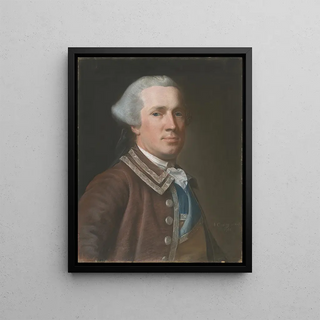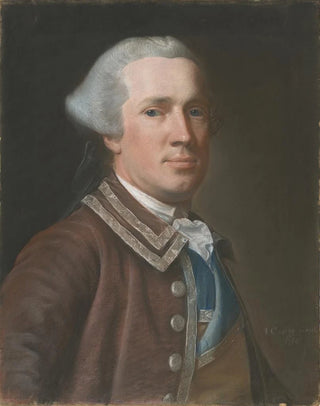Art print | John Temple - John Singleton Copley


View from behind

Frame (optional)
John Temple by John Singleton Copley is an iconic piece that embodies the pinnacle of 18th-century portraiture. This painting, depicting an elegant and contemplative man, transports us to a time when art served not only to immortalize important figures of society but also to express cultural and social values. Copley's technical mastery, combined with his ability to capture the personality of his subjects, makes this work a must-see in art history. By contemplating this art print, viewers are invited to engage in a silent dialogue with the past, exploring the nuances of human psychology through the lens of a bygone era.
Style and uniqueness of the work
Copley's style is distinguished by meticulous attention to detail and skillful use of light and shadow. In "John Temple," every element, from the costume to the accessories, is carefully rendered, demonstrating a concern for realism that characterizes the artist. The subject's face, with its subtle expressions, reveals an emotional depth that transcends simple portraiture. The composition is balanced, and the background, often discreet, highlights the central figure without diverting attention. Copley thus manages to create an intimate atmosphere, where the viewer can almost feel the presence of John Temple beside them. This ability to fuse technique and emotion makes this work a perfect example of Copley's virtuosity.
The artist and his influence
John Singleton Copley, born in Boston in 1738, is often regarded as one of the greatest portraitists of his time. His works, blending European influences with American traditions, helped establish a distinctive style that shaped American portraiture. Copley was able to capture not only the physical appearance of his subjects but also their essence, earning him international recognition. His influence extends far beyond his era, inspiring many artists who followed in his footsteps. By focusing on the psychology of the characters he painted, Copley paved the way for a more introspective approach to portrait painting, thus marking a turning point in art history.

Matte finish

View from behind

Frame (optional)
John Temple by John Singleton Copley is an iconic piece that embodies the pinnacle of 18th-century portraiture. This painting, depicting an elegant and contemplative man, transports us to a time when art served not only to immortalize important figures of society but also to express cultural and social values. Copley's technical mastery, combined with his ability to capture the personality of his subjects, makes this work a must-see in art history. By contemplating this art print, viewers are invited to engage in a silent dialogue with the past, exploring the nuances of human psychology through the lens of a bygone era.
Style and uniqueness of the work
Copley's style is distinguished by meticulous attention to detail and skillful use of light and shadow. In "John Temple," every element, from the costume to the accessories, is carefully rendered, demonstrating a concern for realism that characterizes the artist. The subject's face, with its subtle expressions, reveals an emotional depth that transcends simple portraiture. The composition is balanced, and the background, often discreet, highlights the central figure without diverting attention. Copley thus manages to create an intimate atmosphere, where the viewer can almost feel the presence of John Temple beside them. This ability to fuse technique and emotion makes this work a perfect example of Copley's virtuosity.
The artist and his influence
John Singleton Copley, born in Boston in 1738, is often regarded as one of the greatest portraitists of his time. His works, blending European influences with American traditions, helped establish a distinctive style that shaped American portraiture. Copley was able to capture not only the physical appearance of his subjects but also their essence, earning him international recognition. His influence extends far beyond his era, inspiring many artists who followed in his footsteps. By focusing on the psychology of the characters he painted, Copley paved the way for a more introspective approach to portrait painting, thus marking a turning point in art history.






